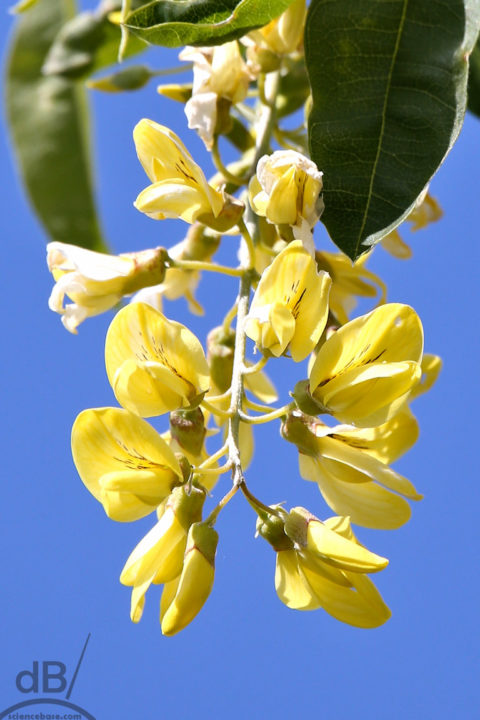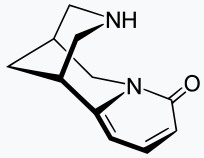TL:DR – My late mother always warned me away from poisonous trees when I were a child, as mothers tend to do. Laburnum was high on the list.
Laburnum (Laburnum anagyroides), a small deciduous tree with pea-like, golden yellow flowers densely packed in pendulous racemes, sweet scented, and typically blossom in May (although the specimen growing in our back garden and the ones in our neighbour’s garden bloomed in the middle of April. The tree has smooth bark, dark green spreading branches and pendulous twigs, trifoliate and oval with long petiole leaves, smooth on the upperside and hairy on the underside.

 Cytisine is also known as baptitoxine and sophorine. Chemically, it is similar to nicotine and has been used medically to assist with smoking cessation in Eastern Europe. It is a partial agonist of nicotinic acetylcholine receptors (nAChRs) in the brain. Not a good idea to test it out if you want to quit the ciggies, you might end up quitting forever.
Cytisine is also known as baptitoxine and sophorine. Chemically, it is similar to nicotine and has been used medically to assist with smoking cessation in Eastern Europe. It is a partial agonist of nicotinic acetylcholine receptors (nAChRs) in the brain. Not a good idea to test it out if you want to quit the ciggies, you might end up quitting forever.
Cytisine’s IUPAC systematic chemical name is:
(1R,5S)-1,2,3,4,5,6-Hexahydro-1,5-methano-8H-pyrido[1,2a][1,5]diazocin-8-one